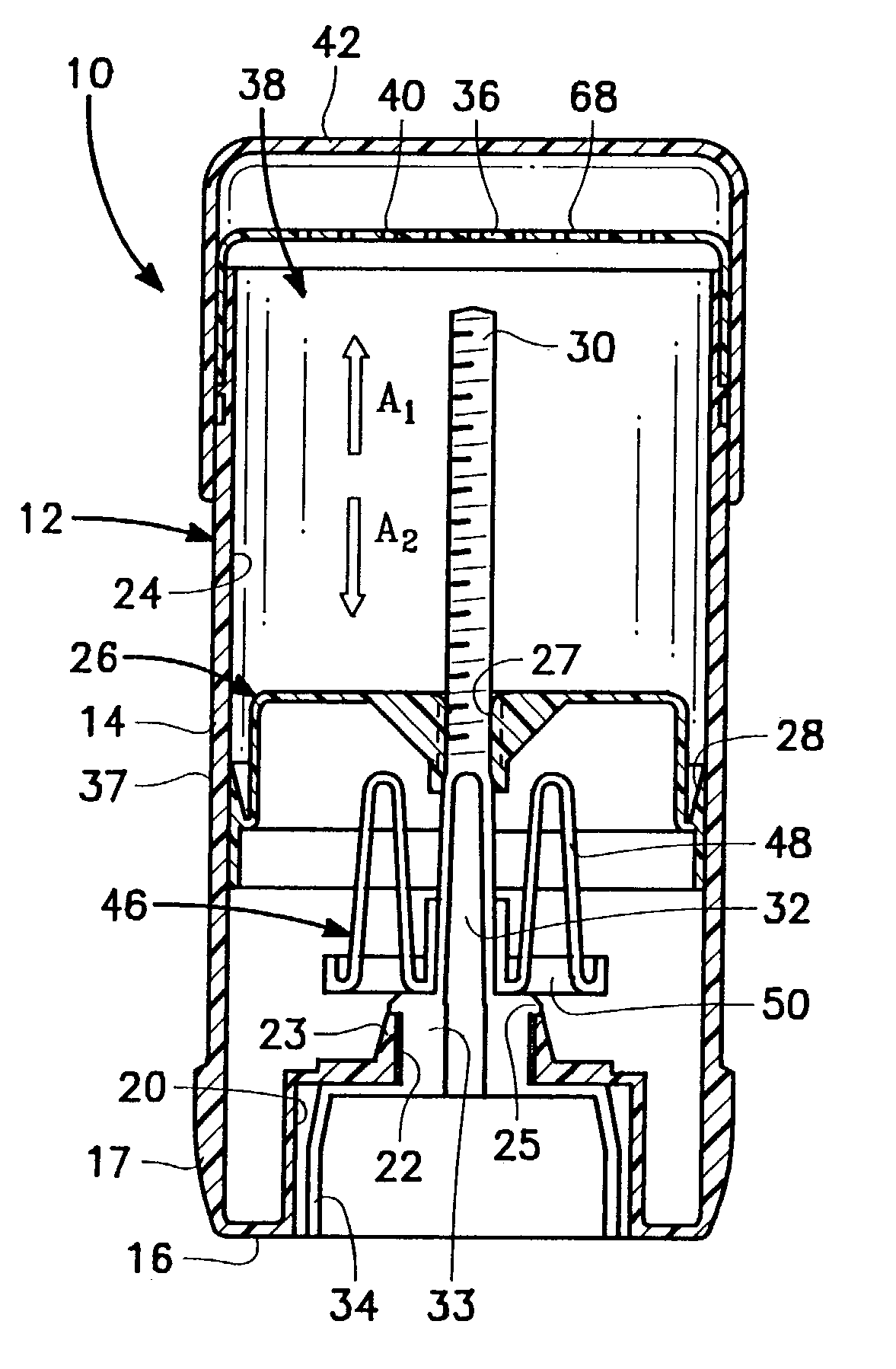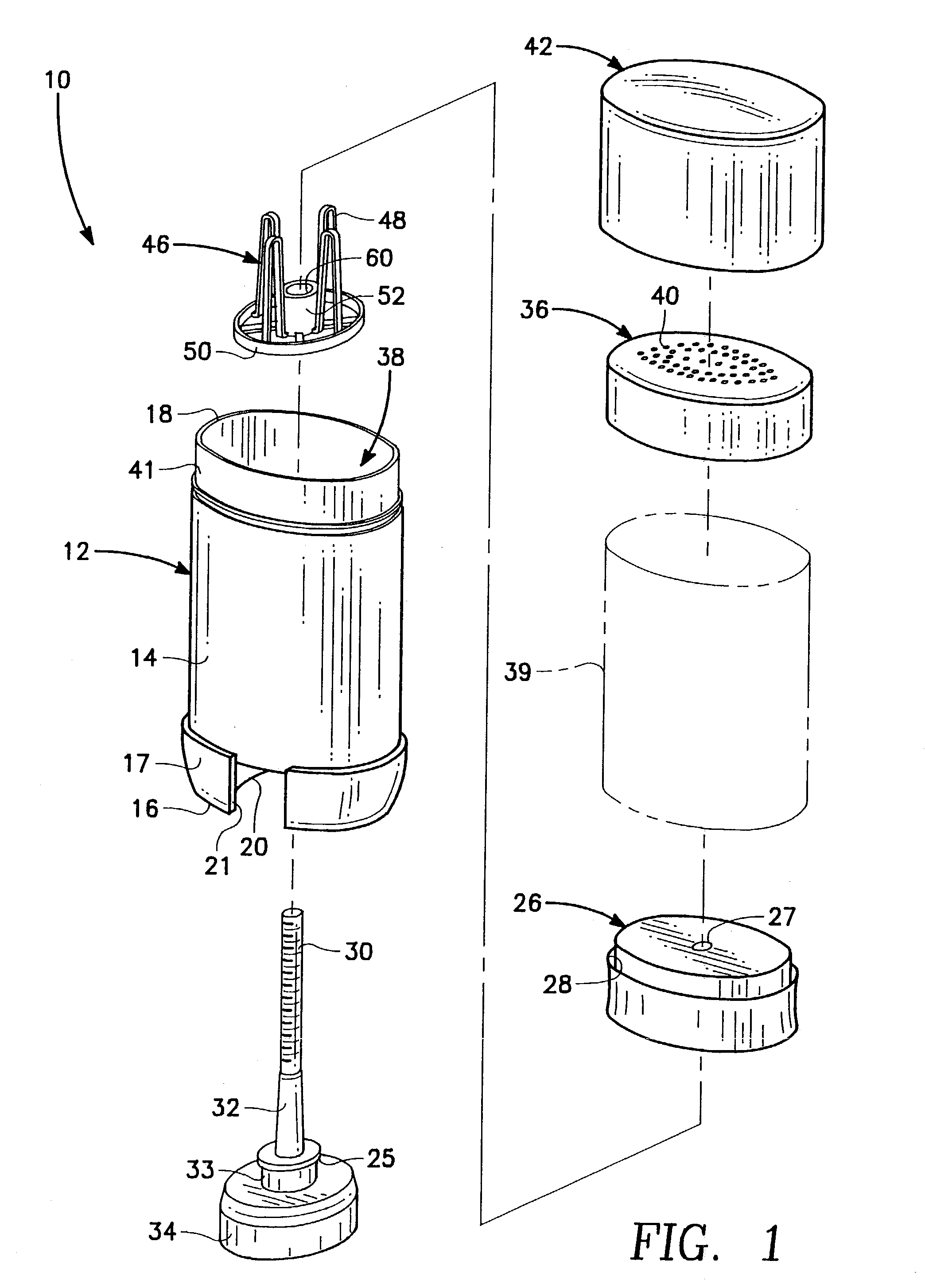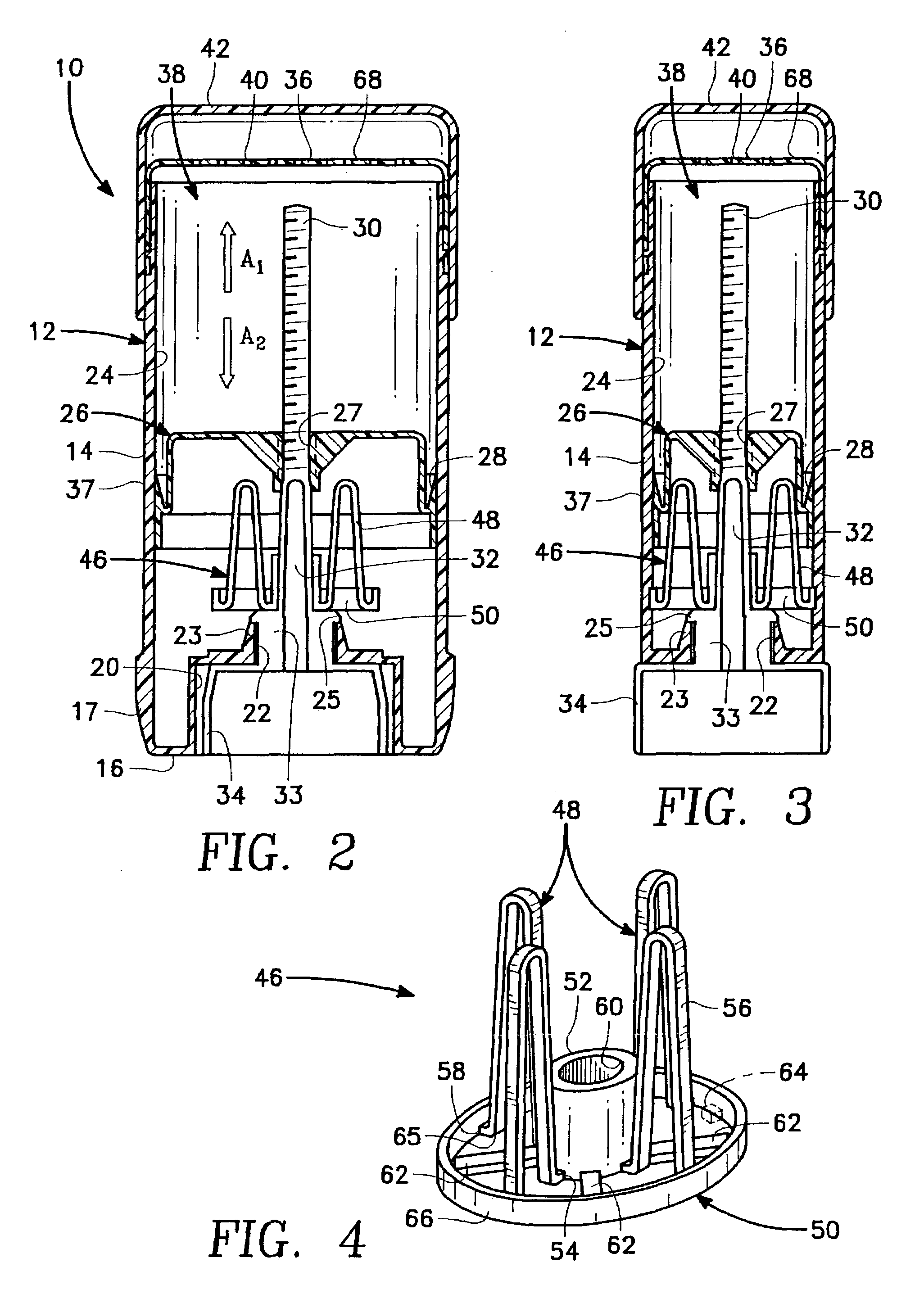Flow control product dispenser
a product dispenser and flow control technology, applied in the field of viscous product dispensing systems, can solve the problems of reducing the volume of the interior chamber, reducing the amount of product to be expelled through the opening, and reducing the retracting force slightly, so as to prevent unwanted product degradation, inhibit undesired product flow, and enlarge the space
- Summary
- Abstract
- Description
- Claims
- Application Information
AI Technical Summary
Benefits of technology
Problems solved by technology
Method used
Image
Examples
Embodiment Construction
[0028]Referring now to the Figures, the product dispenser is shown and is generally designated by reference character 10. The dispenser comprises a container 12 with a continuous sidewall 14 that extends upwardly from a bottom 16 and terminates at a top opening 18. Bottom 16 further includes a bottom recess 20 and a bottom opening 22 that is formed in the bottom recess 20, as shown in FIGS. 1–3. Preferably, the container should have an oval shaped profile when viewed in top plan, as best seen in FIGS. 5–7. It will be appreciated, however, that square, rectangular or other polygonal profiles (as viewed in top plan) are also envisioned. However, the container should have an interior surface 24 which allows for frictional engagement with other components of the dispenser, as described more fully below.
[0029]The dispenser of the present invention includes an integrated elevator assembly comprising a screw 30 that extends longitudinally within the container and along the geometrical cent...
PUM
 Login to View More
Login to View More Abstract
Description
Claims
Application Information
 Login to View More
Login to View More - R&D
- Intellectual Property
- Life Sciences
- Materials
- Tech Scout
- Unparalleled Data Quality
- Higher Quality Content
- 60% Fewer Hallucinations
Browse by: Latest US Patents, China's latest patents, Technical Efficacy Thesaurus, Application Domain, Technology Topic, Popular Technical Reports.
© 2025 PatSnap. All rights reserved.Legal|Privacy policy|Modern Slavery Act Transparency Statement|Sitemap|About US| Contact US: help@patsnap.com



